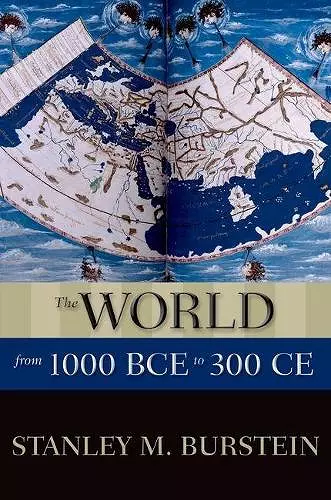The World from 1000 BCE to 300 CE
A comprehensive exploration of connectivity and empires
Format:Hardback
Publisher:Oxford University Press Inc
Published:29th Jun '17
Currently unavailable, and unfortunately no date known when it will be back
This hardback is available in another edition too:
- Paperback£22.99(9780199336135)

This book details the rich history of Afro-Eurasia from 1000 BCE to 300 CE, focusing on connectivity, cultural exchanges, and the rise of empires.
This comprehensive history explores Afro-Eurasia from 1000 BCE to 300 CE, capturing a transformative era marked by enhanced connectivity. During this period, the intertwining of political, economic, and cultural interactions led to the emergence of significant empires, replacing the diverse political entities that previously existed. The collapse of Bronze Age civilizations sparked widespread population movements and conflicts, while the cavalry revolution allowed nomadic groups to establish vast tribal confederations under influential leaders.
As local traditions began to give way to broader cultural narratives, the teachings of influential figures such as Socrates, Confucius, and the Buddha gained prominence. The rise in literacy enabled various individuals from different social strata, including notable figures like the Greek soldier Xenophon and the Indian emperor Ashoka, to contribute to the literary landscape. This flourishing of ideas and texts reflected the rich tapestry of thought and creativity that characterized the time.
By 300 CE, the landscape of Afro-Eurasia had dramatically transformed. The region was dominated by major empires such as Rome, Sassanid Persia, and the Jin Empire, which collectively ruled over a significant portion of the world's population. These empires were interconnected through an extensive network of trade routes that facilitated the exchange of ideas and the spread of new religious movements, including Christianity and Buddhism. The World from 1000 BCE to 300 CE illustrates how these developments laid the groundwork for the subsequent millennium of history in Afro-Eurasia.
...the focus, in line with the theme of the New Oxford World History series, is connectivity – as empires fall, rise, fall and rise again amidst long-term connecting trade routes (only temporarily disrupted) and spreading book-based religions. * Gocha R. Tsetskhladze *
This is a great book and one I highly recommend; it is a testimony to the erudition and clear writing style of its author and would be a solid addition to any library whether for students or faculty just starting out or those who want a refresher on just how integrated and foundational the period covered by this book was in the past and continues to be as it reaches to the present. * David M. Kalivas, Middlesex Community College, World History Connected *
A helpful source for students of the ancient world, broadly defined... Recommended. * CHOICE *
ISBN: 9780199336142
Dimensions: 160mm x 236mm x 15mm
Weight: 397g
176 pages